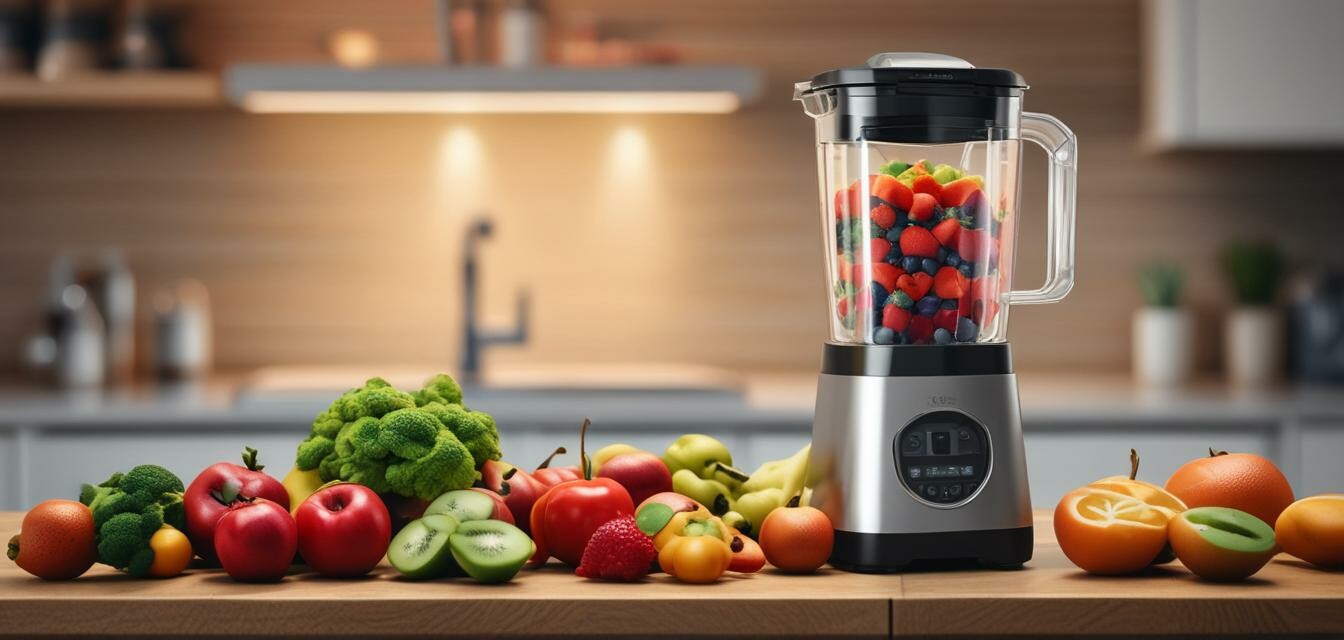
How to choose the best smart blender
- Prioritize blending power and motor speed for quality results.
- Check for smart connectivity features for added convenience.
- Look for versatility in blending functions to meet various needs.
- Consider the ease of cleaning and maintenance.
- Don’t forget to compare warranties and customer service options.
With the rise of smart kitchen appliances, a smart blender can take your cooking experience to the next level. But with so many models available, how do you choose the best one for your kitchen? In this comprehensive guide, we will cover the essential features to look for when selecting a smart blender, including blending power, connectivity, versatility, and other critical aspects. Let’s dive into the key factors!
Understanding smart blenders
Smart blenders combine traditional blending functions with advanced features that can elevate your culinary game. These devices often connect to apps on your phone or tablet, allowing you to control settings, access recipes, and track your blending progress. But, before making a decision, consider the following essential features.
Key features to look for
| Feature | Description |
|---|---|
| Blending Power | A powerful motor ensures your blender can handle tough ingredients like nuts and ice. |
| Smart Connectivity | Wi-Fi or Bluetooth connectivity for app control and recipe access. |
| Pre-programmed Settings | Options for smoothies, soups, and more, simplifying the blending process. |
| Container Material | Choose between glass and plastic; each has its pros and cons. |
| Ease of Cleaning | Look for self-cleaning options or dishwasher-safe components. |
Blending power and motor speed
When selecting a smart blender, perhaps the most critical aspect is the blending power. Higher wattage typically means better performance, especially with tougher ingredients. A motor with at least 700 to 1000 watts is usually sufficient for most tasks.
Connectivity features
Many modern blenders come equipped with smart connectivity options that allow you to control the blender from your smartphone. You can access recipes, customize settings, and even receive notifications when your blend is ready. This feature enhances convenience, especially for those who are often busy in the kitchen. For more information on Bluetooth-enabled devices, visit our Bluetooth-enabled devices page.
Versatility
Smart blenders are not just for smoothies. Look for models that offer multiple blending functions—soups, dips, sauces, and even crushing ice. The versatility can save you from needing multiple appliances, increasing kitchen efficiency.
Material of the blender jar
Blender jars are typically made from glass or plastic. Glass jars are durable and do not retain odors or stains, while plastic jars are often lighter and more break-resistant. Choose based on your preferences and practical needs.
Ease of cleaning
A smart blender should ease your kitchen chores, so look for models that offer easy-clean features. Many smart blenders come with self-cleaning modes or detachable parts that can be put in the dishwasher. For tips on keeping your smart kitchen tools clean, check out our Smart Kitchen Tips.
Considering warranties and customer support
Before finalizing your purchase, ensure the smart blender you choose comes with a good warranty and reliable customer service. Some brands offer extensive warranties that protect against defects, giving you peace of mind.
Comparative analysis of smart blenders
| Brand | Blending Power | Connectivity | Versatility | Ease of Cleaning | Warranty |
|---|---|---|---|---|---|
| Brand A | 800 watts | Wi-Fi | Multiple functions | Self-cleaning | 2 years |
| Brand B | 1000 watts | Bluetooth | Very versatile | Dishwasher-safe | 1 year |
| Brand C | 600 watts | No connectivity | Basic functions | Easy clean | 3 years |
Pros
- Advanced features for enhanced usability.
- Versatile blending options save space.
- Smart connectivity streamlines blending tasks.
Cons
- Can be more expensive than standard blenders.
- Some functions may not match traditional machines.
- Possible learning curve with smart features.
Budget considerations
Smart blenders come in various price ranges. Determine your budget before engaging with options to find a blender that meets your needs without breaking the bank. Consider additional features like connectivity, which might increase the price but offer greater convenience.
Conclusion
Selecting the right smart blender depends on your individual cooking needs and preferences. By understanding essential features such as blending power, connectivity, versatility, and ease of cleaning, you can confidently choose a blender that enhances your culinary skills. If you're interested in further exploring kitchen appliances, take a look at our guides on Buying Guides for more information.